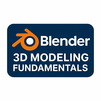
The ANSYS Training Program equips learners with advanced skills in simulation-driven product design and analysis. It covers core modules like structural, thermal, and fluid analysis using ANSYS Workbench and APDL. Participants gain hands-on experience in meshing, boundary conditions, nonlinear analysis, and result interpretation. Designed for engineers, researchers, and CAD professionals, this course bridges theoretical concepts with practical applications. By mastering ANSYS tools, learners can predict performance, reduce prototyping costs, and accelerate innovation across automotive, aerospace, energy, and manufacturing industries.
Ansys Training Interview Questions Answers - For Intermediate
1. What is a submodel in ANSYS, and when is it used?
A submodel in ANSYS is a detailed finite element model of a specific region extracted from a larger global model. It is used when a smaller area requires a finer mesh or more accurate stress results without increasing the computational cost of the entire simulation. The boundary conditions from the global model are applied to the submodel, ensuring continuity and accuracy while maintaining efficiency.
2. Explain the concept of load stepping in ANSYS.
Load stepping involves applying loads or boundary conditions incrementally rather than all at once. This approach helps capture nonlinear behaviors and improves convergence in complex simulations. It is particularly useful in contact, plasticity, or thermal analyses where material or geometric properties change as loads increase gradually.
3. What is the purpose of solver settings in ANSYS Workbench?
Solver settings control numerical methods, convergence criteria, and time stepping in simulations. Adjusting solver parameters—like stiffness matrix updates, iteration limits, and step controls—ensures accurate results and efficient convergence. For instance, in nonlinear problems, the Newton-Raphson method is commonly used to iteratively update the solution.
4. How does ANSYS perform harmonic analysis?
Harmonic analysis in ANSYS studies how structures respond to sinusoidal (harmonic) loads. It determines steady-state vibration amplitudes, phase relationships, and resonance frequencies under periodic excitations. This type of analysis is essential in rotating machinery, acoustics, and fatigue studies, where repetitive loading occurs.
5. What is the difference between implicit and explicit solvers in ANSYS?
Implicit solvers handle equilibrium at each time step using iterative methods, making them stable and efficient for quasi-static and linear problems. Explicit solvers compute results directly in time without iterations, making them suitable for highly dynamic events like impacts or explosions. The choice depends on problem type, time scale, and nonlinearity level.
6. How can symmetry be used to simplify ANSYS simulations?
Symmetry allows engineers to model only a portion of the geometry when the loading, boundary conditions, and structure are symmetric. By applying symmetry boundary conditions, ANSYS reduces model size and computational time while maintaining accuracy. This approach is common in circular, mirror, or planar-symmetric designs such as pressure vessels or turbine blades.
7. What are named selections, and why are they important in Workbench?
Named selections are user-defined labels for faces, edges, or bodies that simplify applying loads, boundary conditions, and post-processing tasks. They make models more organized and reusable, especially in parametric studies or design optimization. If geometry changes, named selections automatically update to maintain consistency in simulation setup.
8. What is design optimization in ANSYS, and how is it implemented?
Design optimization in ANSYS involves adjusting model parameters to achieve desired objectives, such as minimizing weight or maximizing strength. It uses tools like the DesignXplorer to automate iterative simulations based on variable constraints and goals. Sensitivity analysis and response surface methods help identify optimal configurations efficiently.
9. How does ANSYS handle large deformation problems?
For large deformations, ANSYS uses nonlinear geometry formulations that account for significant shape changes during loading. This involves updating the stiffness matrix continuously and tracking strain increments. Applications include rubber components, metal forming, and crash simulations where geometry drastically alters during analysis.
10. What is fatigue analysis, and how is it performed in ANSYS?
Fatigue analysis evaluates how repeated cyclic loading affects the lifespan of a material or component. ANSYS performs fatigue analysis using stress-life (S-N) or strain-life approaches, considering mean stress corrections and damage accumulation. It predicts the number of cycles to failure, helping engineers design components for durability and safety.
11. What is the difference between coupled-field and multiphysics analysis?
Coupled-field analysis involves two or more interacting physics domains solved together, such as thermal-structural or electrostatic-mechanical. Multiphysics analysis extends this by linking multiple fields, possibly with external solvers or data exchange between physics environments. ANSYS supports both types, allowing simulation of real-world phenomena like piezoelectric sensors or thermo-fluid coupling.
12. Explain how parametric modeling enhances ANSYS simulations.
Parametric modeling defines geometry, material properties, and boundary conditions using variable parameters. This allows easy modification and automation of design studies. By linking parameters across CAD and simulation environments, ANSYS enables engineers to perform sensitivity analyses, explore design variations, and optimize performance without rebuilding models.
13. What is the difference between convergence and divergence in analysis results?
Convergence indicates that the solution has reached a stable state within predefined tolerance limits, meaning residual errors are minimal. Divergence occurs when errors increase with iterations, often due to poor meshing, inadequate boundary conditions, or improper solver settings. Ensuring convergence is crucial for reliable and accurate simulation outcomes.
14. How can results be validated in ANSYS simulations?
Validation ensures simulation accuracy by comparing numerical results with experimental data, analytical solutions, or industry standards. Engineers verify mesh independence, review load paths, and perform sanity checks on deformation and stress patterns. A validated model builds confidence in using simulation results for design decisions.
15. How can scripting or automation improve efficiency in ANSYS?
ANSYS supports scripting through APDL (ANSYS Parametric Design Language) and Python-based ACT extensions. Automation helps execute repetitive tasks, batch analyses, and parametric sweeps without manual intervention. This increases productivity, ensures consistency, and enables integration with optimization and data-driven workflows in engineering projects.
Ansys Training Interview Questions Answers - For Advanced
1. What are eigenvalue extraction methods in ANSYS, and how do they influence modal analysis results?
Eigenvalue extraction methods determine a structure’s natural frequencies and mode shapes by solving the system’s characteristic equation. ANSYS provides several extraction algorithms—such as Block Lanczos, Subspace, PowerDynamics, and Unsymmetric Lanczos—each optimized for specific problem types. The Block Lanczos method is most commonly used due to its balance between computational efficiency and accuracy for large symmetric matrices. For unsymmetric or complex systems, the Unsymmetric Lanczos method provides better convergence. These algorithms reduce the large stiffness and mass matrices into manageable subspaces, solving only a few dominant modes required for analysis. The choice of extraction method directly affects computational time, accuracy, and the stability of higher-order modes, making method selection a critical step in vibration analysis of aerospace, automotive, and civil structures.
2. How does ANSYS handle mesh morphing during shape optimization and fluid-structure coupling?
Mesh morphing in ANSYS dynamically adjusts mesh nodes to accommodate geometry changes during optimization or multiphysics coupling, without the need for full remeshing. It maintains element connectivity while redistributing nodes smoothly across boundaries based on displacement vectors or design parameters. In shape optimization, morphing allows parametric design updates while preserving mesh quality. In fluid-structure interaction (FSI), morphing ensures mesh integrity as the structure deforms under fluid pressure. The system employs smoothing algorithms and spring-based methods to minimize element distortion, maintaining solver accuracy. This technique drastically reduces preprocessing time and ensures simulation stability across iterative or time-dependent analyses involving moving boundaries or deformable geometries.
3. Explain the working of the Newton-Raphson method in solving nonlinear problems within ANSYS.
The Newton-Raphson method is an iterative numerical technique used to solve nonlinear equilibrium equations in ANSYS. It linearizes the nonlinear relationship between loads and displacements by expanding it in a Taylor series and solving the resulting set of linearized equations. Each iteration updates the stiffness matrix and load vector until equilibrium is achieved between internal and external forces. Convergence is determined when residual forces fall below a tolerance threshold. Variants like the modified Newton-Raphson update the stiffness matrix less frequently to save computational time, though at a cost of slower convergence. This method is central to solving contact, plasticity, and large deformation problems, where nonlinearity arises from material behavior, geometry, or boundary conditions.
4. What are the benefits and challenges of using Reduced Order Models (ROMs) in ANSYS simulations?
Reduced Order Models (ROMs) simplify complex simulations by capturing essential system dynamics using a smaller set of equations derived from full-scale models. In ANSYS, ROMs are created through model order reduction techniques like modal truncation, Proper Orthogonal Decomposition (POD), or Krylov subspace projection. ROMs drastically reduce computational time while maintaining sufficient accuracy, enabling real-time system analysis or design optimization. They are particularly valuable in applications such as digital twins, control systems, and parametric studies. However, challenges include ensuring model fidelity, handling nonlinearities, and maintaining accuracy across wide operational ranges. The process demands careful validation against the full model to ensure predictive reliability.
5. How is explicit time integration used in ANSYS for high-speed dynamic events?
Explicit time integration methods are employed for highly transient, nonlinear problems such as impact, crash, and explosion simulations. Unlike implicit solvers, which require equilibrium iteration at every step, explicit methods compute acceleration and velocity directly using small time increments derived from the Courant-Friedrichs-Lewy (CFL) condition. ANSYS LS-DYNA implements this approach using central difference schemes to achieve stability and capture rapid stress wave propagation. Because it avoids global matrix inversion, the method is computationally efficient for large models with severe contact or material nonlinearities. However, the small time steps required can increase total simulation time, so balancing mesh size, mass scaling, and time-step control is essential for optimal performance.
6. Discuss the concept of thermal-mechanical fatigue analysis in ANSYS and its industrial relevance.
Thermal-mechanical fatigue (TMF) analysis evaluates the combined effects of cyclic thermal and mechanical loads on material life. ANSYS simulates TMF by coupling transient thermal and structural analyses, capturing cyclic temperature changes, expansion, and stress accumulation. The process includes temperature-dependent material properties, creep effects, and phase changes for high-temperature components. TMF is crucial in industries such as aerospace, power generation, and automotive engineering, where turbine blades, exhaust manifolds, and engine pistons experience alternating hot and cold cycles. ANSYS provides life estimation tools based on strain-life (ε–N) and Coffin-Manson approaches, predicting crack initiation points and fatigue damage progression, which helps engineers optimize materials and design against premature failure.
7. How does ANSYS handle non-conformal meshing and data transfer between mismatched grids?
Non-conformal meshing allows adjacent domains with dissimilar meshes to interact without requiring node-to-node matching. ANSYS achieves this using interpolation and projection algorithms that map data such as pressure, temperature, or displacement across mismatched interfaces. The software employs techniques like mortar methods and contact elements to ensure equilibrium and continuity of forces. This capability is particularly beneficial in multiphysics simulations—such as CFD-structure coupling—where mesh resolutions differ due to varying physics requirements. Data transfer accuracy depends on interpolation schemes, with conservative mapping preserving total fluxes. Non-conformal meshing provides greater modeling flexibility, reduces preprocessing effort, and allows hybrid domain decomposition in large-scale simulations.
8. What is the process of performing topology optimization in ANSYS, and how is it different from shape optimization?
Topology optimization in ANSYS aims to identify the optimal material distribution within a defined design space to achieve maximum stiffness or minimum weight. The process uses finite element analysis combined with optimization algorithms to iteratively remove inefficient material based on stress or strain energy density criteria. The Solid Isotropic Material with Penalization (SIMP) method is commonly employed, gradually transforming elements from solid to void based on a penalization factor. Unlike shape optimization, which modifies predefined boundaries or surfaces, topology optimization redefines the internal structure itself. The resulting topology is often refined and converted into manufacturable geometry using smoothing or CAD reconstruction tools, supporting applications in lightweight structural design and additive manufacturing.
9. Explain the concept and implementation of cyclic symmetry analysis in ANSYS.
Cyclic symmetry analysis reduces computational cost by exploiting the repetitive nature of rotationally symmetric structures like turbines, gears, and rotors. Instead of modeling the full structure, only one sector representing the repeating segment is analyzed. ANSYS applies cyclic boundary conditions to replicate continuity and phase shifts between adjacent sectors. This approach significantly decreases mesh size and computation time while providing accurate global results. Modal, harmonic, and transient analyses can all utilize cyclic symmetry to evaluate vibration, stress, and resonance characteristics efficiently. Careful definition of sector angles, interface nodes, and phase relationships ensures accurate reconstruction of full-system behavior.
10. How can user-defined material subroutines (UMAT) or user-defined functions (UDFs) enhance ANSYS capabilities?
User-defined subroutines such as UMAT (for structural) and UDF (for Fluent) enable engineers to implement custom material laws, boundary conditions, or source terms not available in the standard ANSYS library. These routines are written in languages like Fortran or C and linked during runtime. For example, a UMAT can define nonlinear constitutive equations for composites or shape-memory alloys, while a UDF can model variable heat generation or fluid properties dependent on chemical composition. This flexibility empowers researchers to simulate proprietary materials or experimental conditions accurately. However, ensuring numerical stability, correct unit systems, and derivative consistency is vital to prevent solver divergence.
11. What are convergence stabilization techniques in highly nonlinear ANSYS analyses?
Highly nonlinear simulations often encounter convergence difficulties due to abrupt stiffness changes, contact transitions, or material yielding. ANSYS provides several stabilization techniques to address this, including automatic time stepping, line search algorithms, and arc-length methods. Contact stabilization introduces small damping forces to maintain equilibrium during contact transitions, while adaptive Newton methods adjust iteration parameters dynamically. For geometric nonlinearity, load stepping with automatic sub-increments ensures progressive solution convergence. Additionally, solver settings like “normal stiffness factor” and “penetration tolerance” can be fine-tuned to enhance stability. Proper use of these techniques allows the solver to handle complex behaviors like snap-through buckling and plastic collapse without divergence.
12. How does ANSYS manage electromagnetic-thermal-structural coupling in multiphysics simulations?
ANSYS facilitates electromagnetic-thermal-structural coupling through sequential or fully coupled workflows. The electromagnetic module computes Joule heating, Lorentz forces, and magnetic flux distributions, which are transferred to thermal and structural solvers. The thermal analysis evaluates temperature rise due to heat generation, while the structural analysis determines resulting deformations and stresses. Data exchange occurs iteratively through the Workbench coupling interface or MAPDL scripts. This multiphysics capability is vital for electric motor design, induction heating, and transformer simulations where interactions between magnetic fields, heat, and mechanical stress determine performance. Fully coupled analysis ensures accuracy but demands significant computational resources, while sequential coupling offers efficiency for quasi-static scenarios.
13. What methods are available in ANSYS for validating and verifying simulation accuracy?
Validation and verification (V&V) are essential to ensure simulation credibility. Verification checks whether the model solves the equations correctly through mesh independence studies, convergence testing, and residual monitoring. Validation compares simulation results against experimental or analytical benchmarks to confirm physical accuracy. ANSYS supports built-in error estimation, adaptive meshing, and comparison tools for quantitative assessment. Sensitivity analyses and uncertainty quantification further enhance model robustness by identifying critical input parameters. Documentation and traceability through simulation reports also support V&V compliance with industry standards such as ASME V&V 10 or ISO 9001. Proper V&V practices ensure the reliability of ANSYS results in safety-critical applications like aerospace and nuclear systems.
14. Describe the use of distributed ANSYS and how it optimizes large-scale parallel processing.
Distributed ANSYS utilizes the Message Passing Interface (MPI) framework to perform parallel computations across multiple processors or machines. It partitions the finite element model into domains, assigning each domain to a processor for simultaneous computation. Data is exchanged between processors through communication layers, allowing efficient handling of large models with millions of elements. Distributed ANSYS optimizes memory use and reduces solution time, making it ideal for high-fidelity nonlinear or dynamic analyses. Advanced domain decomposition and load-balancing algorithms ensure that each processor performs comparable work, preventing computational bottlenecks. The result is scalable performance across multi-core and cluster-based environments, enabling simulation of extremely large engineering systems.
15. What are the future trends in simulation technologies that ANSYS is adopting to support digital transformation and AI integration?
ANSYS is actively advancing toward integrating artificial intelligence, cloud computing, and digital twin technologies into its simulation ecosystem. AI-driven solvers use machine learning algorithms to predict convergence behavior, accelerate optimization, and enhance mesh generation. Cloud-based solutions such as ANSYS Cloud and Discovery enable scalable, on-demand computation for global teams. Digital twin implementations link real-time sensor data from physical systems with simulation models to predict maintenance, performance, and failure patterns. Moreover, integration with generative design tools and reinforcement learning frameworks enables autonomous design evolution based on performance objectives. These advancements are transforming simulation from a standalone engineering task into a continuous, intelligent process supporting Industry 4.0 and AI-powered design automation.
Course Schedule
| Dec, 2025 | Weekdays | Mon-Fri | Enquire Now |
| Weekend | Sat-Sun | Enquire Now | |
| Jan, 2026 | Weekdays | Mon-Fri | Enquire Now |
| Weekend | Sat-Sun | Enquire Now |
Related Courses
Related Articles
Related Interview
- SAP S4HANA Embedded Analytics Training Interview Questions Answers
- Plant Design using CADWorx Plant Professional Training Interview Questions Answers
- SailPoint IdentityIQ Interview Questions Answers
- Salesforce Certified Advanced Administrator Training Interview Questions Answers
- Salesforce Service Cloud Interview Questions Answers
Related FAQ's
- Instructor-led Live Online Interactive Training
- Project Based Customized Learning
- Fast Track Training Program
- Self-paced learning
- In one-on-one training, you have the flexibility to choose the days, timings, and duration according to your preferences.
- We create a personalized training calendar based on your chosen schedule.
- Complete Live Online Interactive Training of the Course
- After Training Recorded Videos
- Session-wise Learning Material and notes for lifetime
- Practical & Assignments exercises
- Global Course Completion Certificate
- 24x7 after Training Support














 Join our Live Instructor-Led online classes delivered by industry experts
Join our Live Instructor-Led online classes delivered by industry experts